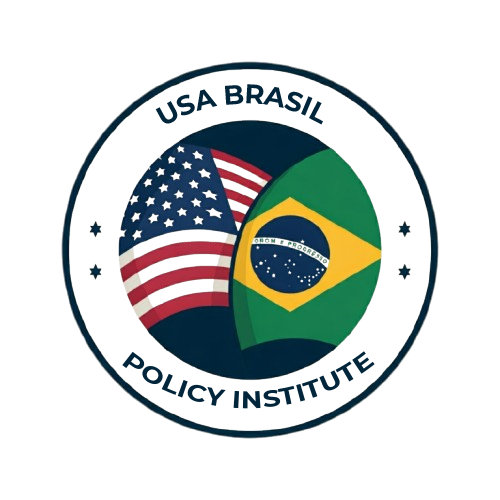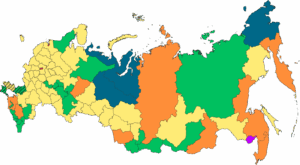The primary reason for the likely reversal is the associated increase in costs, coupled with the fact that these particular products cannot feasibly be manufactured in the United States. Additionally, tariffs are typically implemented as part of comprehensive strategies to further a country’s interests; however, the tariffs introduced during the Trump administration were primarily aimed at reducing the trade deficit and generating revenue.
The policy should be revised under Trump to entail a multi-faceted approach, including efforts to significantly reduce the trade deficit, counter China’s influence in Latin America and Africa, and achieve a more balanced trade relationship with China and other countries. This strategy would also address areas such as rare earth elements and products related to national security.
It remains uncertain whether reciprocal tariffs constitute the most effective policy. Even if countries like Vietnam impose zero tariffs and eliminate trade barriers, this does not necessarily guarantee a balanced trade outcome.
Step 1: The United States currently manufactures a range of products, such as cars, pharmaceuticals, tires, domestic appliances, steel, copper, aluminum, rubber floor mats, food, auto parts, and engines. Combined imports of pharmaceuticals, automobiles, and related products total approximately $650 billion, accounting for about half of the US trade deficit.
One suggested policy approach is to implement targeted measures aiming to support existing industries that produce goods domestically. This could involve imposing a general 15% tariff on countries that manufacture these products, with a 10% reciprocal tariff on European cars up to an agreed value based on European purchases of US vehicles; the rate would rise to 15% above this threshold. For countries with no car exports to the USA, a 100% tariff could be applied if there are concerns about new factories beginning exports to the US market.
Proposed tariff rates include a 15% tariff on pharmaceutical imports, and a phased increase in tire import tariffs from 25% to 50% over a year, with similar considerations for materials like aluminum, copper, or steel. Appliance imports also represent a significant value. Approximately 10,000 domestically produced products may warrant identification and tariff protection, ranging from kitchen cabinets to small electric motors.
The strategy would include announcing sectoral tariffs at potentially high levels—such as 50%, 100%, or even 200%—to protect US manufacturers, with comparatively lower rates for automobiles to mitigate the risk of retaliation from European trading partners.
Step 2: Key national security items—such as rare earths, semiconductors, medical products, and drones and many more products—should be categorized into three groups:
- Foes (China, Iran, North Korea, Russia): 200% tariff on national security items; 300% on Chinese rare earths.
- Friends (BRICS countries): 50% tariff on these products.
- Family (Europe, Canada, Mexico, Central America, Australia, Japan, South Korea, Ecuador, Colombia, major non-NATO allies): 15% tariff.
Step 3: Countering China’s economic and political Influence in South America and Africa
This section discusses adjustments in trade policy regarding product sourcing. The United States must evaluate its manufacturing capabilities and identify products made by Africa and South America. Subsequently, the U.S. would then place secotoral tariffs on products from Mexico, Europe, China, and Southeast Asia for specific goods, primarily lighter manufactured items, with a focus on shifting purchasing preferences toward South America and Africa for products these regions already make or can easily make.
For example, Nigeria previously had 150 textile mills serving its population of 227 million, but currently only four remain due to competition from low-cost (China) imports. As part of this strategy, the U.S. would increase tariffs, potentially up to 50% or 100% for all countries accept South American or African countries above certain quotas, and allocate import quotas to selected nations. For instance, Egypt could receive a quota for up to $8 billion in textiles a massive increase, while Jordan’s exports would be capped at current levels, and similar measures would apply to Bangladesh and India based on previous year values. The intent is to shift imports from South and Southeast Asia to Africa and South America, prioritizing countries with larger populations, which are anticipated to become future consumers of U.S. products. However having a quota system on these products will greatly make sure there is not concentration.
Higher tariffs would be imposed above quota thresholds for most Asian countries, potentially reaching 25%, 50%, or even 100%, specifically targeting products the U.S. seeks to source outside Asia. Additionally, this approach aims to address significant trade imbalances with countries like Vietnam, China, and Thailand.
According to estimates, the U.S. trade engagement in Africa to surpass China would require yearly sourcing of products between $80 and $100 billion, while doing so in South America would require approximately $160 billion. These targets are achievable if the U.S. protects these regions from Asian/ Mexican competition.
Excluding Sectoral tariffs for US products and National security tariffs, South America and Africa will have affectively 0% tariff up to a determined quota.
Step 4: Costco, Walmart and Consumer products
When we eliminate the world for thousands of products already made in the USA, and we then eliminate Asia for hundreds or thousands of products already made in Africa and South America. It is a $1 trillion dollar shift.
However products that will not go to South America or Africa are Toys, and a variety of consumer products. This is where the 10% flat tariff comes in for Southeast Asia and a 0% tariff for Pacific Island Nations and Indian Ocean nations.
Step 5: Shifting the remaining products out of China to Southeast Asia and the rest of the world. The USA doesn’t want consumer products from a national security perspective to come from China. This is why China needs at least a 60% tariff on all remaining products, while it has at least a 100% or 200% tariff on products that are already made in Africa, South America and North America and Europe.
Moving things out to Africa and South America will really dent China, Textiles alone China is dominate, but not anymore, if Brazil starts making their own, or Nigeria starts making their own, then China will loss nearly 437 million people that currently mostly buy Chinese products.
China will retaliate against the USA, and that is why the USA needs to pass a law to appropriate 10 billion dollars on anything that the USA is immediately dependent on China for, and from that point, they need to blow out the bank to get rare earth Magnet production operational in 6 months, as if there is an actual war.
A tariff on raise on China should take 1 year as the USA widows away on Chian with sectorial tariffs. Any direct assault on China will result in a locking up of trade.
The goal is to make deals with each Southeast Asian/ South Asia (India) countries for the remaining non-sectorial products: 0% tariffs on US goods in exchange for a 17.5% tariff on the non-sectorial products.
The goal is simple, get Southeast Asia primed and ready to manufacture billions of goods that China produces, just incase China escalates when tariffs are raised higher. This way store shelves won’t go empty.
Conclusion
The current policy going to work according to what President Trump hopes for. More access for US products to enter other countries. However it does nothing to counter China, unless tariffs for Africa and South America have their own protections and US factories have stronger tariff protections.




